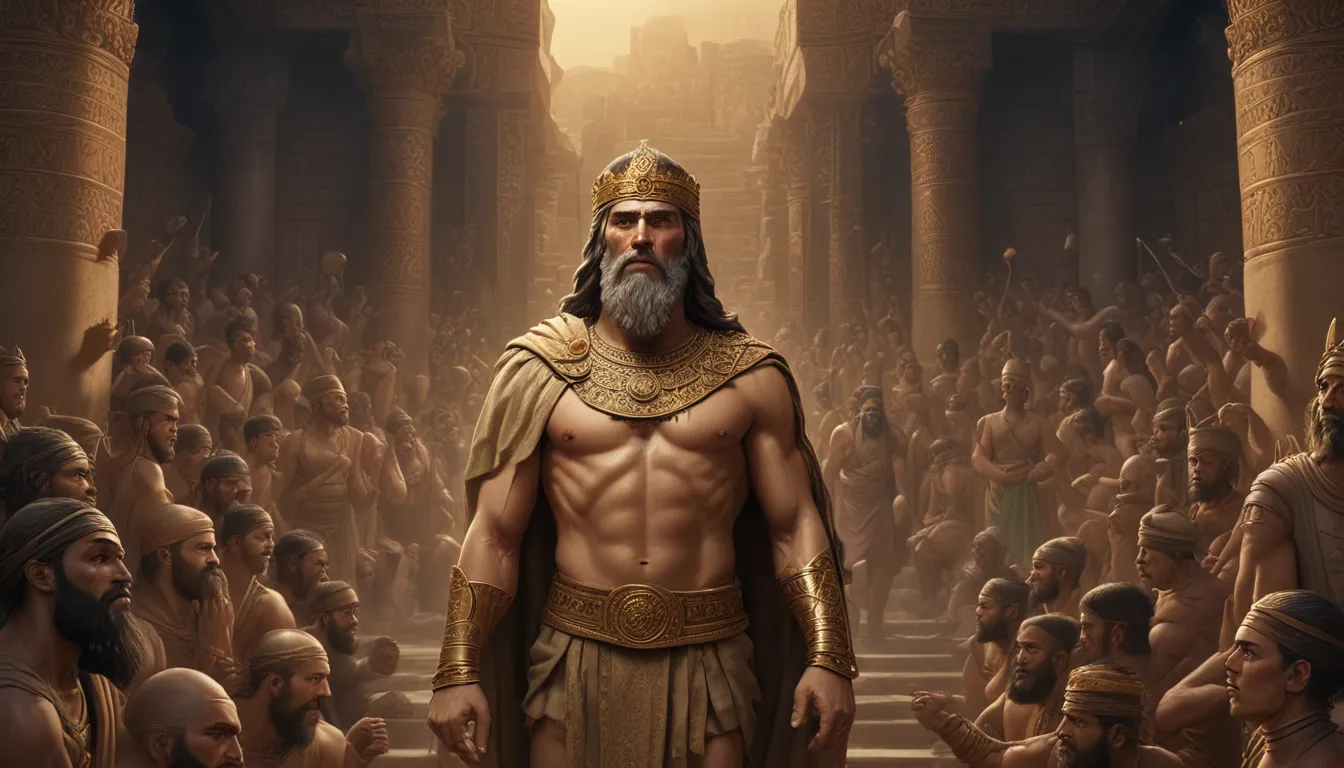The images in our articles may not match the content exactly. They are used to grab your attention, not to show the exact details in the text. The images complement the text but do not replace it.
Welcome to a captivating exploration of Nebuchadnezzar II, one of the most influential rulers of ancient Mesopotamia. Known as Nebuchadnezzar the Great, his reign as king of Babylon from 605 to 562 BC shaped the history and culture of the region in remarkable ways. In this article, we will delve into 14 fascinating facts about Nebuchadnezzar II, shedding light on his achievements, innovations, and enduring legacy that continues to mesmerize historians and scholars to this day.
The Reign of Nebuchadnezzar II
Nebuchadnezzar II ruled the Neo-Babylonian Empire for nearly four decades, from 605 BC to 562 BC. His reign marked a period of exceptional growth and power for the empire, solidifying his reputation as a prominent figure in ancient history.
The Hanging Gardens of Babylon
One of Nebuchadnezzar II’s most renowned accomplishments is the construction of the Hanging Gardens of Babylon, considered one of the Seven Wonders of the Ancient World. These lush and vibrant gardens, believed to have been built for his queen, Amytis of Media, showcased his architectural prowess and affection for his beloved.
Restoring the City of Babylon
Nebuchadnezzar II undertook extensive reconstruction efforts in the city of Babylon, transforming it into a magnificent center of art, culture, and trade. From rebuilding city walls to restoring temples and palaces, his legacy as a builder and visionary is deeply ingrained in the city’s history.
The Ishtar Gate
Under Nebuchadnezzar II’s rule, the iconic Ishtar Gate was erected in Babylon. Adorned with vibrant blue-glazed tiles and intricate reliefs of animals and mythical creatures, this grand entrance gate symbolized the city’s splendor and artistic sophistication.
The Tower of Babel
Nebuchadnezzar II’s ambitious building projects often draw comparisons to the biblical Tower of Babel. While the exact location of the tower remains a mystery, its existence serves as a testament to the king’s grand ambitions and influence in ancient Mesopotamia.
The Babylonian Captivity
During Nebuchadnezzar II’s reign, the Babylonian Empire conquered and exiled the people of Judah, a historical event known as the Babylonian Captivity. This period had profound implications on biblical history and the cultural fabric of the region.
The Fall of Jerusalem
In a display of military might, Nebuchadnezzar II captured Jerusalem in 587 BC, resulting in the destruction of the city and its temple. This conquest marked a pivotal moment in the history of Judah, signaling the end of the Kingdom of Judah and the onset of the Babylonian exile.
The Babylonian Chronicles
As a patron of literature, Nebuchadnezzar II commissioned the compilation of the Babylonian Chronicles, offering invaluable insights into the king’s military campaigns and the historical events of his time. These texts serve as a testament to his commitment to preserving the legacy of Babylon.
The Code of Hammurabi
While Nebuchadnezzar II did not create the Code of Hammurabi, he demonstrated a deep reverence for ancient laws and actively sought to preserve them. His efforts ensured the longevity and significance of this foundational legal code in Mesopotamian society.
The Babylonian Zodiac
Nebuchadnezzar II played a pivotal role in the development of astrology, refining and expanding the Babylonian Zodiac with its twelve signs. His contributions laid the groundwork for future astrological systems and reflected his interest in the celestial realm.
The Siege of Tyre
In a determined effort to expand his empire, Nebuchadnezzar II laid siege to the city of Tyre for an enduring thirteen years. This prolonged conflict exemplified his tenacity and ambition to exert control over the Phoenician territories, showcasing his strategic military prowess.
The Babylonian Calendar
Nebuchadnezzar II introduced significant reforms to the Babylonian calendar, essential for scheduling religious ceremonies, agricultural activities, and administrative tasks. His calendar system became widely adopted throughout Mesopotamia, reflecting his influence on daily life and governance.
The Nebuchadnezzar Cylinder
The Nebuchadnezzar Cylinder, a valuable clay artifact, contains an inscription detailing the king’s successful restoration efforts in Babylon. This historical record offers a glimpse into the ruler’s achievements and aspirations, preserving his legacy for future generations to study and appreciate.
Nebuchadnezzar II’s Enduring Legacy
Nebuchadnezzar II’s legacy endures through his architectural feats, military conquests, and cultural contributions, shaping the history of Babylon, Mesopotamia, and the broader ancient world. His reign left an indelible mark on civilization, inspiring awe and fascination among historians and enthusiasts alike.
Conclusion
In conclusion, Nebuchadnezzar II emerges as a multifaceted and enigmatic figure in ancient history, leaving behind a legacy of grandeur and power. From the majestic Hanging Gardens of Babylon to the conquest of Jerusalem, his reign embodies a period of cultural flourishing and remarkable achievements that continue to captivate our imagination today.
As we unravel the complexities of Nebuchadnezzar II’s reign, we gain a deeper understanding of the vibrant civilization he cultivated and the enduring impact he had on the ancient world. His lasting contributions to art, science, and literature serve as a testament to his vision and leadership, resonating through the annals of history.
FAQs
What is Nebuchadnezzar II known for?
Nebuchadnezzar II is renowned for his role as the king of Babylon during the Neo-Babylonian era. He is celebrated for his military campaigns, architectural accomplishments, and the construction of the Hanging Gardens of Babylon.
When did Nebuchadnezzar II rule?
Nebuchadnezzar II ruled Babylon from 605 BC to 562 BC, overseeing a prosperous and influential era in the empire’s history.
What were Nebuchadnezzar II’s military achievements?
A skilled military strategist, Nebuchadnezzar II achieved notable successes, including the conquest of Jerusalem, the destruction of the First Temple, and the Babylonian Captivity of the Jewish people.
What is the significance of Nebuchadnezzar II’s architectural achievements?
Nebuchadnezzar II’s architectural accomplishments, such as the Hanging Gardens of Babylon, symbolize his dedication to showcasing grandeur and beauty in his capital city, leaving a lasting legacy in ancient history.
What impact did Nebuchadnezzar II have on Babylonian culture and society?
Nebuchadnezzar II played a pivotal role in fostering artistic, literary, and scientific advancements in Babylonian culture, contributing to a period of cultural blossoming and intellectual innovation under his reign.
Embark on a journey through the captivating civilizations of the ancient world as we uncover the mysteries and marvels of Nebuchadnezzar II’s legacy. From the breathtaking Hanging Gardens to the enduring influence of Babylonian culture, each discovery offers a glimpse into the rich tapestry of history that continues to inspire and intrigue us today.
We remain committed to providing engaging and trustworthy content that reflects the diverse insights and expertise of our community of contributors. Our rigorous editorial process ensures the accuracy and reliability of the facts we share, guaranteeing a premium experience as you explore the depths of history with us. Embrace the journey of discovery with confidence and curiosity as we navigate the annals of time together.






